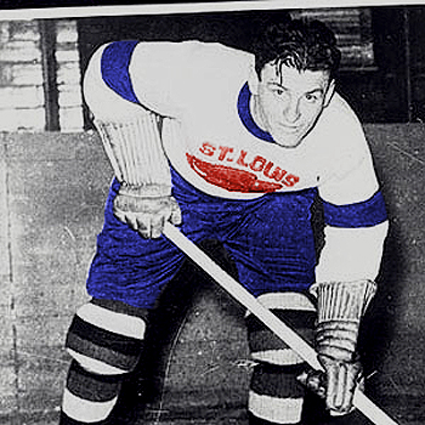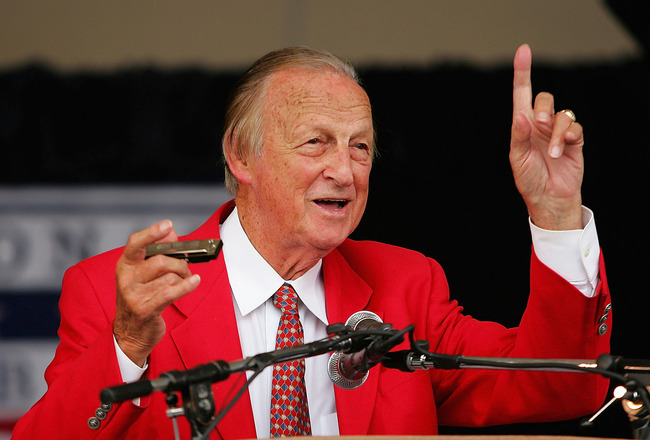 |
| St. Louis Eagles member Ralph Bowman |
By 1924, the NHL decided to expand the NHL into America. A new team from Montreal was formed in 1924, as well as a team in Boston. In 1925, a New York team was added as well as a team in Pittsburgh. In 1926, another New York team formed. In 1927, Chicago and Detroit got teams. Meanwhile, Ottawa's fan base was shrinking. Play against American teams wasn't as popular as play against Canadian teams. Attendance began dropping off for Ottawa. That same year, Ottawa won its last Stanley Cup, but managed to lose about $50,000. The leak of money couldn't be stopped.
The Ottawa Senators didn't play the 1931-32 season; they asked the NHL for permission to suspend operations in order to save money. In the meantime, they leased out players, and they received a loan to continue operating. They returned for the 1932-33 season, but finished in last place, and finished last in the 1933-34 season also. It was decided that Senators had to move to a larger city in order for the debts to be payed off. In the 1931 census, Ottawa only was listed as having 110,000 people. At the time, St. Louis was the 7th largest American city with a population of over 820,000, so it was decided the Ottawa Senators would move.
In 1932, St. Louis had asked for an NHL team, but the league denied the request, saying that travel to the Midwest while the depression was going on was too costly. But after the money problems of the Senators, the deal looked like a life-saver for one of the original NHL teams, so it was granted. When the team moved, the company owners changed hands, and the team was renamed "the Eagles" after the logo for Anheuser-Busch. There was already a hockey team in St. Louis at the time (the St. Louis Flyers) which belonged to the AHA (American Hockey Association), which threatened to sue the new Eagles, but the lawsuit never went through.
The St. Louis Eagles played their first season in 1934-35. They played in the St. Louis Arena (later home to the Blues). At the time, there were two hockey divisions in the NHL: American and Canadian. The Eagles remained a part of the Canadian division, which didn't help with the far road games. They finished last in the division, while scoring the least amount of goals, and allowing the 2nd most goals. The team lost $70,000 that year. They sold off a number of decent players, but they couldn't break even. They looked into moving the team some place else, Cleveland being one and a return to Ottawa being another. The team petitioned the NHL to once again suspend operations to stop the money leak, but the NHL declined. The NHL purchased the team for $40,000 (after no buyers were found) and dispersed the players through a special draft. In 1938, the second Montreal team (the Montreal Maroons) tried to move to St. Louis, but the NHL blocked the move, citing the travel cost problems that happened to the Eagles.
 |
| St. Louis Eagles logo |



